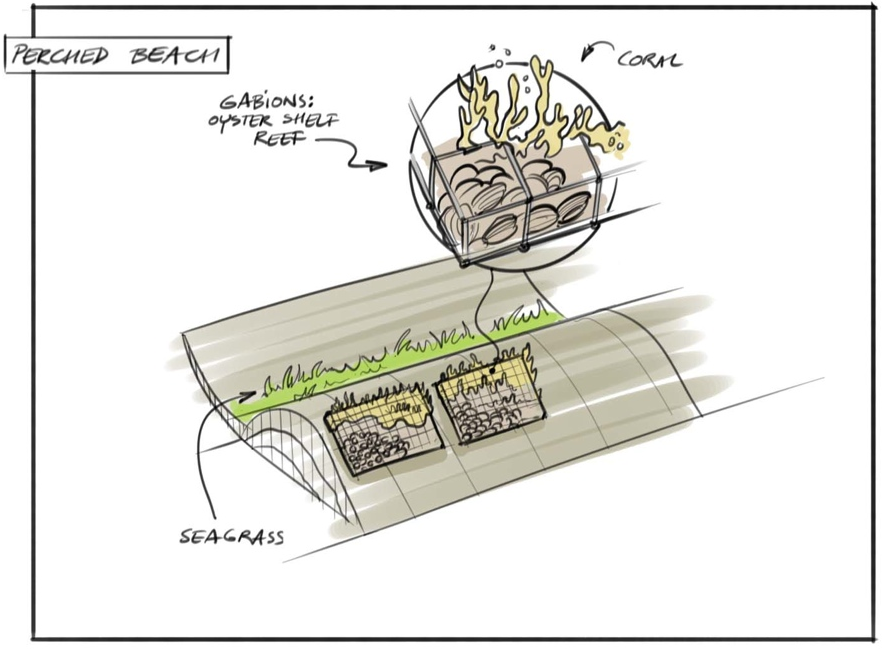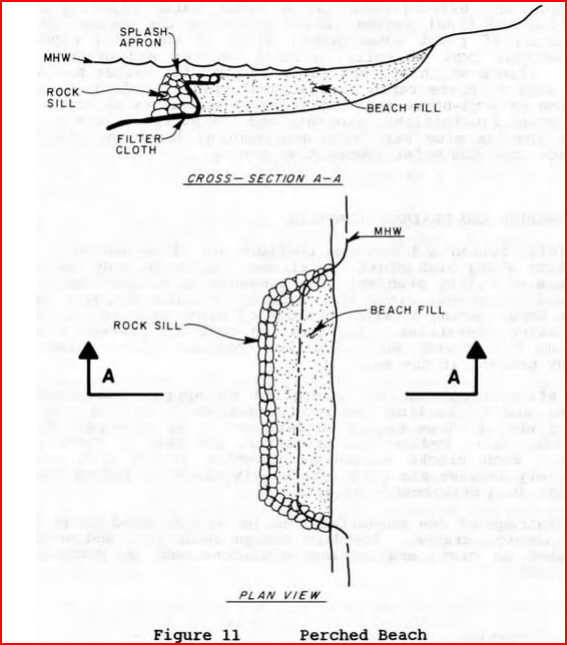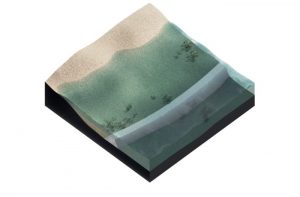Get Started
On steep, eroding beaches, the use of a perched beach may be useful to reduce sand losses or to reduce the sand volume required for nourishment. A perched beach is at the seaward side supported by an underwater sill or breakwater. Landward from this sill, where a nourishment may be applied, a dynamic equilibrium profile will develop. Perched beaches can be applied to reduce seaward sediment loss, thus reducing the sand volume needed for regular coastal maintenance by nourishments. As the hydrodynamic energy on the beach is reduced due to the submerged structure, a steeper beach profile may form and the shoreline may shift seawards.

The perched beach concept provides several opportunities to enhance biodiversity. In the lee of the structure, reduced hydrodynamic energy may yield suitable conditions for sea grass meadows. The structure itself may provide hard substrate for coral establishment, oyster reefs etc. Mangroves may cover the breakwater if it is (partly) emerged.
Perched beach designs have been tested both in laboratory experiments and in reality, with varying success. Depending on the local conditions, increased or decreased erosion may occur. This underlines the importance of a thorough knowledge of the environment in which the perched beach is going to be constructed.

BwN Interest
The added value of this building solution to Building with Nature (BwN) type projects is that it enables creating natural coastal barriers while enhancing other ecosystem services such as recreation. This building solution is mainly applicable in the initiation and planning and design phase.
Advantages
- Reduce the sand volume needed by nourishments
- Reduce erosion by altering hydrodynamics
- Can enhance biodiversity by providing habitat for seagrass, corals, shellfish and mangroves. These could then damp hydrodynamic energy. The sea grass meadows can then stabilise the sediment in the lee of the structure. Sea grass meadows together with shellfish reefs could improve water quality. Coral reefs add recreational value to the area because they are attractive for snorkeling and diving.
Disadvantages
- If the perched beach cannot be constructed along the whole beach strip, lee-side erosion occurs.

